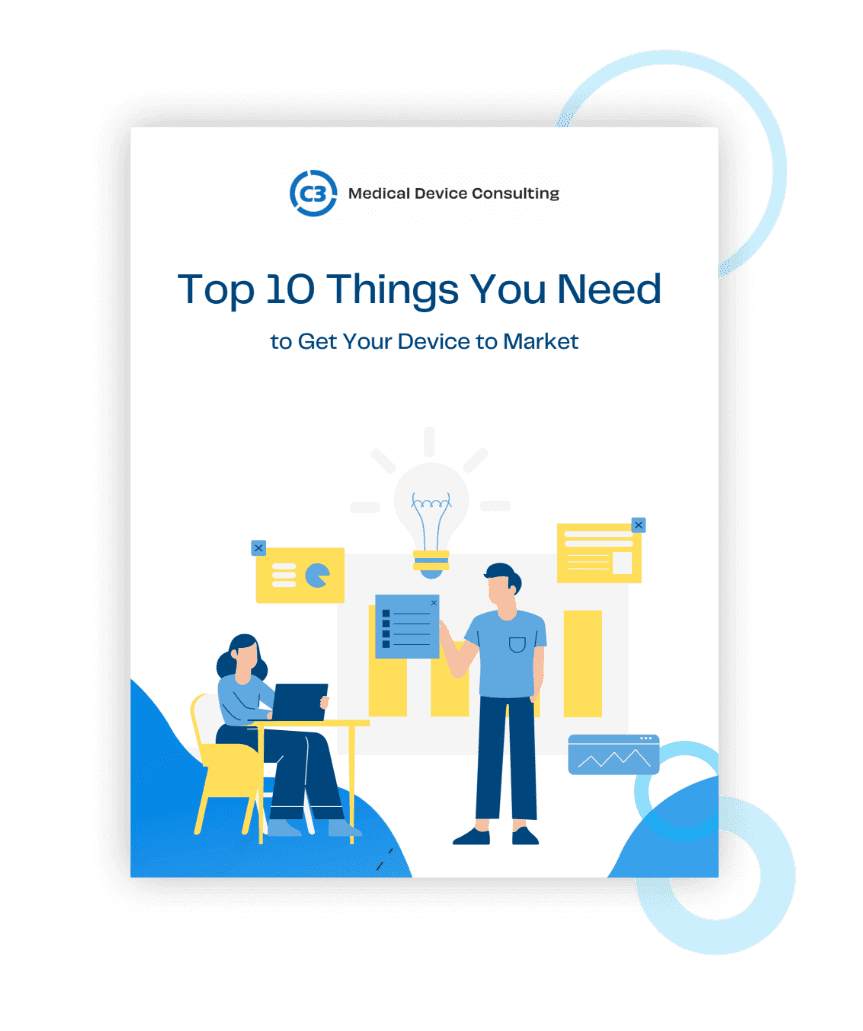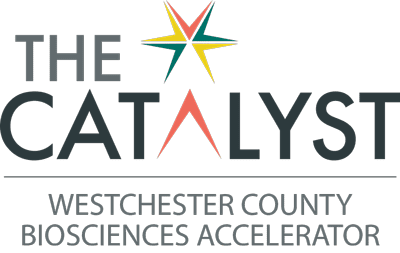As you begin a new medical device project you may have a clear picture of it in the real world … or it might be a bit fuzzy. Either way, the journey from the grain of an idea to a widely adopted product is complex, and progress is not always in a straight line.
Here we’ll look at C3 Consulting’s five-step project development roadmap. It’s a simple framework to keep your project on track from point to point.
Step 1: Idea Generation
Your idea might not be fully formed yet, but you can still lay a foundation for success.
In this first step spend some time researching a target market, identifying potential obstacles, and studying your competition. Use these tips to define the scope and goals for the project:
- Brainstorming works best when you’re intentional about it. Select a team of stakeholders with a range of experience and perspectives. Pick a team leader to do background research on the idea and the market to share with the team ahead of time. This way they’ll need less time to absorb the basics during work sessions. Avoid criticizing or dismissing ideas quickly, and see if any can be combined or expanded.
- Market research shows how or if your device concept fits customer needs. Market research reports and trade magazines give the big picture. Focus groups can uncover what most interests your target audience. In addition to medical professionals, reach out to those with experience in medical electronics and manufacturing, logistics, or relevant unique settings to uncover priorities or challenges you didn’t anticipate.
- Customer feedback is invaluable if you are an established supplier. Talk to your customers about what they appreciate in similar devices, problems that persist, or “must have” features. For example, an implantable device that is easier to pick up or manipulate might be selected over one that is more cumbersome. Think beyond the device to packaging, pack quantities, and labeling.
Step 2: Concept Development
With a solid idea in mind, it’s time to picture it in the real world: refine the details of what it does and how, and pinpoint the target audience. For example, if you’re developing a wearable device for periodic automated blood pressure monitoring, narrow in on a single, best approach. Is it for general use or a niche audience such as pediatrics or nursing/rehab settings? Will it solve a lingering problem with existing similar devices or is it an entirely new and innovative solution? These details create a compelling value proposition for future customers.
Risk awareness and analysis is important at this stage. Identify and explore potential roadblocks like funding needs, applicable regulations, the need for trials and other user testing, and intellectual property protection.
Clarifying details aids planning for things like:
- your budget
- time-to-market goals
- addressing the competition and differentiating your device
- resource allocation for:
- software/firmware development and manufacturing
- staffing
- marketing and advertising
- distribution channels
- supply chain challenges
Step 3: Design and Engineering
It’s one thing to identify a solution to a problem, but it’s another thing entirely to build it. In this step you’ll answer questions about the specifics of functionality and design such as:
- What are the most important features and capabilities?
- Which are less critical?
- Does it require connectivity or other “smart” technology?
- Will it utilize a mobile app or embedded software/firmware?
- Is battery life or size a concern?
- How big a factor are device weight, size, or materials?
The answers to these questions inform design decisions. Determine if you have the needed programming and engineering skill in-house or if working with a partner is the better choice. Depending on the device and its end use, there may be more than one way to build out circuits, arrange electronic components, or develop a user-friendly app.
Keep open lines of communication with all of your electronics, software, and manufacturing partners, especially when it comes to non-negotiables. If a compromise on an aspect of the design is suggested, ask appropriate questions but also trust your partners’ expertise.
You may also be involved in design decisions specific to manufacturing the device. These can have a major impact on time-to-market and budget. Your engineering team is an excellent resource for decisions about vendors, materials, and processes for assembly.
Step 4: Testing and Validation
Be sure to allot enough time and budget for this step, which often takes longer than anticipated. At minimum this includes regulatory testing and certification. Some devices may also require clinical trials to study efficacy and performance. Usability testing and cybersecurity testing/analysis for “smart” or IoT-connected devices, such as pumps or monitors, are also options. Medical device testing can be performed in-house or outsourced depending on your capabilities.
Testing one or more prototypes gives a glimpse into real world performance. Prototyping won’t uncover every problem but it can reveal programming or coding errors, material or durability issues, or other design flaws. In some cases, making multiple versions of a device prototype at once aids in comparing features or capabilities.
Conduct field tests with a representative sample of users. If you plan to distribute the device worldwide, include users and sites in multiple countries. Stay open to all feedback, even if it’s difficult to hear and results in design changes.
Step 5: Manufacturing and Launch
When the major design and engineering decisions are made, and testing is complete, it’s time to source materials like PCBs, select manufacturing partners, and plan your supply chain. Once production is underway, it’ll be time for the product launch.
This is the time to plan the size of the initial production run and distribution. You’ll also want to determine if the device will be available widely right away or limited to certain markets at first. Set benchmarks to decide when to increase production or distribution as well.
In the early days of manufacturing, keep a close eye on production and any bottlenecks, unanticipated quality control issues, or supply chain challenges your manufacturing partners report. Can they solve the issues or is some redesign needed? It’s always better to address them early than risk regulatory approval or recalls later on.
As production ramps up, think about how you’ll introduce the device to potential customers. Some marketing options include:
- advertising or product spotlight articles in industry publications
- trade show booths
- inbound marketing such as a website with a blog or downloadable PDFs
- outbound marketing like direct mail or calls
- paid search or social media ads
- sales team visits to medical facilities or “lunch and learn” sessions (virtual or in person)
In practice there will be some overlap throughout the process – progress isn’t always in a straight line. For example, you might begin discussing options for distribution channels while still finalizing the design, or developing marketing materials when the initial batch is still in production.
At C3, we bring years of medical device development experience to each project. Our team can help you navigate the twists and turns in the journey without missing vital steps or taking shortcuts.
If you’re ready to get started, please contact us today!










